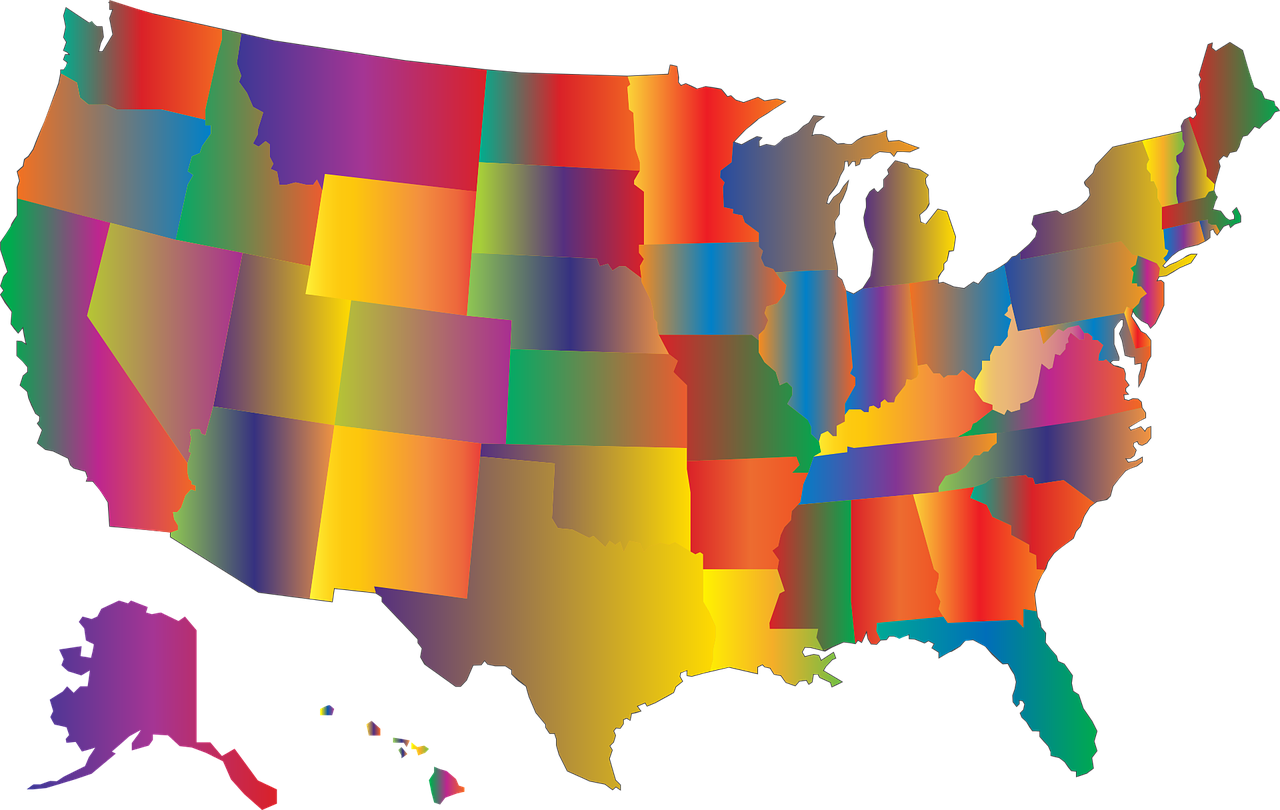This is the second of two posts on the new regulations that the U.S. Department of Education released in the Federal Register earlier this week. The first post focused on state authorization and student notification issues. This post focuses on several issues under the purview of accreditation. Do read down through the list of regulations as some of the issues (e.g., student identity verification) might not have come to mind as being addressed in rules for accrediting agencies.
The proposed language came out of the consensus language from the Negotiated Rulemaking Committee meetings that we covered extensively earlier this year. Please note that the Department will accept public comments on this set of proposed regulations that are submitted by July 12, 2019. So, time is short.

In this post, we focus on several regulations that have to do with the recognition of accrediting agencies, standards that accrediting agencies are to use in reviewing institutions, and regulatory expectations of institutions. We also address the process for institutional personnel to submit public comments.
Please note that for the purposes of this post, we are going to refer you to pages numbers in the proposed regulation draft document rather than the Federal Register so that we will be better able to direct you to specific language because the print is bigger, there is only one column of language, and you can use adobe tools to make notes in the margin.
The Proposed Regulations
Student Identity Verification – 34 CFR 602.17(g)
What is being proposed? (page 102-105)
 Accrediting agencies will be required to “demonstrate that it requires institutions that offer distance education or correspondence education to have processes in place to establish that a student who registers for a distance education or correspondence education course or program is the same student who participates and completes the course or program and receives academic credit.” Do not forget that you also need to notify students of any additional charges (fees, software, hardware) associated with identify verification. This notice needs to occur at the time of registration or enrollment. You cannot wait for the syllabus to inform students about these expenses. See this example of what could happen.
Accrediting agencies will be required to “demonstrate that it requires institutions that offer distance education or correspondence education to have processes in place to establish that a student who registers for a distance education or correspondence education course or program is the same student who participates and completes the course or program and receives academic credit.” Do not forget that you also need to notify students of any additional charges (fees, software, hardware) associated with identify verification. This notice needs to occur at the time of registration or enrollment. You cannot wait for the syllabus to inform students about these expenses. See this example of what could happen.
What is different? (page 103-105)
Previously there was a short, non-exhaustive list of methods to meet this requirement, including use of passwords and proctoring. The Department removed this list because it sought “to remove redundant or unclear language, provide flexibility to agencies to approve verification methods, and avoid circumstances under which the regulations would quickly become out-of-date as technology changes.”
What is our opinion?
This is a welcomed change. Given the growth of contract cheating, this is a very serious issue — both in distance and on-campus education. At one point, the negotiated rulemaking considered expanding this requirement to on-campus courses. In the end, it is still only applied to distance and correspondence courses.
The short list of passwords and proctoring put extra emphasis on a couple solutions and at least one of those (having pins or passwords) is not an effective solution in today’s cyber-insecure world. Accrediting agencies and institutions will need to find (hopefully evidence-based) ways to demonstrate that they are verifying student identity. By removing the list of options, there will be flexibility to find solutions that fit the modality and content of the course.
There are vendors who are BLATANTLY MISREPRESENTING the intent of this change, all in the name of selling their product. Removing passwords and proctoring for the regulatory language does NOT mean that those options will not be recognized. Rather, there must be proof that they work. Be careful in listening to high-pressure sales techniques by some of those in the student verification business.
Why you may want to comment
We will comment in support of this change. Allowing for flexibility and moving to a more evidence-based approach makes sense. We will also ask for explicit acknowledgement by the Department that items removed from the list are not invalidated as alternatives for fulfilling the requirements of verifying student identity.
Changing the “Geographic Scope” Recognition of Accrediting Agencies to “Geographic Area” – 34 CFR 602.3 and 34 CFR 602.11
What is being proposed? (page 75 and pages 79-81)
“The Department proposes to remove ‘(1) geographic area of accrediting activities’ from the definition of ‘scope of recognition or scope.’”
 “We propose to amend the title of §602.11 to read “Geographic area of accrediting activities,” and to amend § 602.11(b) so that an agency’s geographic area on record with the Department would include not only the States in which the main campuses of its accredited institutions are located but also any State in which an accredited location or branch may be found.”
“We propose to amend the title of §602.11 to read “Geographic area of accrediting activities,” and to amend § 602.11(b) so that an agency’s geographic area on record with the Department would include not only the States in which the main campuses of its accredited institutions are located but also any State in which an accredited location or branch may be found.”
What is different? (page 75 and pages 80-81)
Institutional accrediting agencies have long been identified as “regional” or “national” agencies. Regional agencies had a defined geographic scope in which their institutions were domiciled. National agencies served institutions from any state, territory, or protectorate. The Department is eliminating geography as one of criteria for recognizing an accrediting agency. While accrediting agencies will still report the geography of where their institutions are located, none of them will be limited as to which states they serve.
According to the Department: “We believe that the current practice of limiting an accrediting agency’s recognized scope to a certain geographic area is outdated because regional agencies now accredit branch campuses and additional locations in States outside of their stated geographic scopes. Also, we seek to clarify that even if an agency includes a State in its geographic area, this does not discourage another agency from also including that State or territory in its accrediting area. With the removal of geographic area from the definition of ‘scope,’ we hope to allow for additional competition so that an institution or program may select an agency that best aligns with the institution’s mission and to improve transparency about the States in which each agency accredits campuses.”
Also from the Department: “We seek to simplify the labeling of accrediting agencies to reflect their scope more accurately (e.g., institutional agencies, programmatic agencies, specialty agencies). We also aim to remove labels that facilitate inaccurate beliefs about differences among accrediting agencies, since the Department holds all to the same set of standards. Disparate treatment of students based on which agency accredits an institution or program is unwarranted given that all agencies adhere to the same Department requirements, and this practice harms students and adds cost for students and taxpayers.  In some instances, the unjustified differentiation of agencies based on the geographic area in which they operate has created barriers to entry for certain occupations and has made it difficult for those who complete programs to continue their education and earn a higher-level credential. The Department does not believe, for example, that rejecting transfer credits, an application for admission to graduate school, or a request to sit for a State occupational licensing exam on the basis of the type of Department recognized accreditation is justified.”
In some instances, the unjustified differentiation of agencies based on the geographic area in which they operate has created barriers to entry for certain occupations and has made it difficult for those who complete programs to continue their education and earn a higher-level credential. The Department does not believe, for example, that rejecting transfer credits, an application for admission to graduate school, or a request to sit for a State occupational licensing exam on the basis of the type of Department recognized accreditation is justified.”
What is our opinion?
First, there is some logic to this change as regional accreditors include member institutions with a main campus in its region, but that institution may have branch campuses or additional locations all across the country.
There are some unintended consequences with this change. We have already heard from some state regulators that use the distinction between regional and national accreditation in state laws and regulations. This may mean the need for legislation or regulatory action in the states to adapt to this change. Montana, Nevada, North Dakota, and Texas hold legislative sessions only in odd-numbered years; therefore this regulation would go into effect before those bodies could act. Of course, the Department’s intent was to remove the distinction between regional and national accrediting bodies, but it is coming as a surprise to the States.
Some institutions also use the distinction between regional and national accreditation in their policies, often without good reason, as the type of accreditation alone is not a signal of the quality of that agencies review processes. Institutions will need to update their policies.
We are still scratching our heads over the notion of “competition” among accrediting agencies. While accreditors are supposed to be membership-based organizations to help members improve their offerings, they have also assumed a significant oversight role. We are hard-pressed to think of any other area of regulatory compliance in which there is competition among oversight bodies. Would that not lead to those who are regulated seeking the most-favorable agency and to an ultimate overall lessening of standards?
Why you may want to comment
State agencies and institutions that will be affected by this change may need to seek legislation or regulatory updates to be in compliance. They may wish to comment on any difficulties that will emerge because of the change or in coming into compliance by July 1 of next year. The Department should be informed of those concerns.
Written Arrangements – 34 CFR 602.22 (a)(2)(x) and 34 CFR 602.22 (a)(3)(i)-(ii)
What is being proposed? p. 356-357
The Department proposed a revision to the Substantive Change regulations.  Specifically, it is proposed under 34 CFR 602.22 (a)(2)(x) in regard to written arrangements that an accredited institution must request approval to enter into a written arrangement with an institution or organization that is not certified to participate in a Title IV HEA programs if the non-certified institution or organization is to provide between 25-50 percent of an accredited institution’s educational programs. The agency may designate a senior staff to approve or disapprove this request and do so within 90 days of receipt of the material unless there is a significant circumstance that would provide for up to 180 days to review the request.
Specifically, it is proposed under 34 CFR 602.22 (a)(2)(x) in regard to written arrangements that an accredited institution must request approval to enter into a written arrangement with an institution or organization that is not certified to participate in a Title IV HEA programs if the non-certified institution or organization is to provide between 25-50 percent of an accredited institution’s educational programs. The agency may designate a senior staff to approve or disapprove this request and do so within 90 days of receipt of the material unless there is a significant circumstance that would provide for up to 180 days to review the request.
What is different? p. 127-128 and p.130-134
This written arrangement section moves this language to section 34 CFR 602.22 (a)(2)(x). The approval of the request language in 34 CFR 602 (a)(3)(i)-(ii) is intended to move these requests forward more efficiently for less complex requests, but also reserve time needed for more complex requests.
What is our opinion?
The Department appears to be designing an efficient structure with which to review requests that will provide the opportunity for institutions to partner with non-accredited partners such as museums, medical facilities, or other organizations to expand learning opportunities for students.
Why you may want to comment
Because this regulation requires approval for the accredited institution to partner with a non-accredited organization to provide between 25-50 percent of a program, you may wish to review the practices at your institution. You may need to seek clarity about what interactions would fit a partnership that must be reviewed.
Direct Assessment – Chapter 34 602.16(d)(1) and Chapter 34 602.22(a)(2)
What is being proposed? (page 98 and 131)
“The Department also wants to ensure that agencies evaluating such programs first receive Department approval for the addition of direct assessment programs to their scope of recognition so that the Department can provide proper oversight.”
Direct assessment programs will also be added to the list of substantive change notifications or approvals that institutions will need to make with their accrediting agency.
What is different? (page 103-105)
The recognition of agencies to oversee direct assessment programs is part of the Department’s desire “to ensure that, as more institutions add direct assessment education programs, accrediting agencies are equipped to evaluate and approve such programs.”
The addition of direct assessment programs will now be part of the list of activities for which institutions will need to submit substantive change documentation with its accrediting agency.
What is our opinion?
More detailed proposed regulations on direct assessment are forthcoming in the coming weeks, in the form of additional notices from the Department. These changes are welcomed as they are beginning to normalize direct assessment as an alternative path for institutional federal financial aid eligibility. We support these changes.
Why you may want to comment?
There is nothing too controversial here. You may wish to wait to comment when the more complete regulations on direct assessment are released.
Student Disclosures – 34 CFR 668.41 & 34 CFR 668.43
There are several institutional disclosures that are being added or amended. We have highlighted a few.
What is being proposed?
Placement Rates: On page 407, 34 CFR 668.41 (d) (5) (i)-(iii) proposes to remove components of the institutional disclosure for placements rates. The language will substitute the institutional disclosure of any placement rate that it calculates with the description of the placement rate that it publishes or uses in writing.
Prior Learning: You will note on page 409, that 34 CFR 668.43 (a) (11) (iii) would be added to require disclosure of the criteria used to award prior learning experience.
Written arrangements: The Department proposes on p 409 to add 34 CFR 668.43 (a) (12) to require that the institution provide a description of the written arrangements in the course description for which the institution entered per 34 CFR 668.5. The information must include the portion provided by the other provider, the name and location of the other provider(s), the method of delivery of that portion, and the additional costs to the student for enrolling in this program subject to an arrangement.
Institution under investigation: You may recall from our previous blog about the proposed regulations, the Department proposes that the institution disclose under 34 CFR 668.43(a)(20) if they are aware of any investigation, action, or prosecution by a law enforcement agency for an issue related to academic quality, misrepresentation, fraud, or other “severe matter.” Students are to be notified of that fact.
What is different?
The disclosure regarding placement rates is substitution of language. The Department explained on p. 206 that the requirement of a calculation rate incentivized an institution from calculating a placement rate. However, if an institution advertises a placement rate, then they must disclose how the rate was prepared. The Department believes that students rely on those advertised rates.
For additions and amendments to 34 CFR 668.43, the additional portion of (a) (11) (iii), regarding prior learning, is added to the disclosure. The written arrangements disclosure of (a) (12) is proposed to include that the description of the arrangement is to be located in the course description. The investigations of the institution disclosure is proposed as a new section to 34 CFR 668. You can find the Department’s reasoning discussion on p209-210 of the announcement.
What is our opinion?
We generally maintain that providing information to students is beneficial. Transparency is the focus of these disclosures.
Why you may want to comment?
You may wish to review the changes to the disclosures with members of your institution staff to determine processes to manage these plus the other disclosures found in these regulations. If you find any ambiguity or wish to seek clarity for what is required to be provided through these proposed additions and revisions, you may want to comment to seek direction. If you find that there will be difficulties in complying, suggest ways that would make the disclosure more useful for students and less difficult for the institution to comply.
Additional Regulations of Which You Should Be Aware and May Wish to Comment
We will cover the following items much more briefly, but thought you should be aware of these proposed changes. You may also want to review them more thoroughly and consider commenting on them.
Innovation alternatives for accrediting agencies
There was great interest by the Department and many of the negotiators to allow some freedom for accrediting agencies to work with unanticipated innovations or unforeseen situations (e.g., disasters, financial downturns, changes in the economy or workforce needs) to have some leeway in working with institutions. Some on the committee questioned whether such freedom was allowable.
The Department decided, for the first time, to allow some limited level of discretion on the part of agencies. On page 108: “In proposed § 602.18(c), we note that nothing in the Department’s recognition regulations prohibits an agency from having alternate standards, policies, and procedures to satisfy recognition requirements in the interests of innovation or addressing undue hardship to students, provided that the alternative measures, and selection of participants, are approved by the agency’s decision-making body; equivalent goals and metrics are set and applied; the process for establishing and applying the alternative standards, policies, and procedures is published; and the agency requires the institution or program to demonstrate a need for the alternative approach, as well as that students will receive equivalent benefit and will not be harmed.”
On page 110: “We intend for paragraphs (c) and (d) to provide safe harbors for agencies to exercise responsibly their ability to support innovation and address hardship without jeopardizing their recognition. Again, the Department has included guardrails to ensure careful consideration and monitoring of this flexibility and to ensure that it contains appropriate protections for students.”
We very much support this flexibility and urge you to comment in support of it. One thing we know for sure is that there are innovations in the offing that we cannot imagine and do not fit neatly into regulations written with a traditional classroom model in mind. Having some flexibility with safeguards is greatly welcomed.
Additional Locations
There are official definitions (mostly) of a main campus and of a branch campus, which is geographically separate, has its own faculty, and has its own budget and hiring authority. The term “additional location” is used in regulations and financial aid guidance, but has not been defined. The term is being defined in Chapter 34, 600.2, which is where the Department is trying to consolidate (thankfully) many definitions used in regulations. We very much appreciate this definition being added for the sake of clarity.
On page 40: “The proposed definition of ‘additional location’ would define the term as a facility geographically apart at which the institution offers at least 50 percent of a program and would provide that an additional location may qualify as a branch campus. We propose to clarify the definition of ‘branch campus’ and indicate that it is one type of additional location.”
Additionally, in section 602.22, the requirements for institutional reporting additional locations and for accrediting agency oversight of them includes some changes. The Department streamlined some accrediting processes and removed some requirements that it found “overly prescriptive” (p. 134-135).
Dual Credit
The Department seemed to be concerned about the faculty requirements for dual credit courses used by some accrediting agencies. On page 97, regarding Chapter 34 602.16(f)(4): “nothing would prohibit agencies from having separate faculty standards for instructors teaching courses within a dual or concurrent enrollment program, or career and technical education courses, if the instructors are qualified by education or work experience for that role.”

On page 99, “The Department does not believe an agency should have to choose between setting rigorous standards for faculty that may be appropriate, for example, at comprehensive or research institutions, and allowing other kinds of institutions to hire the faculty that will provide students with the best opportunities possible, including in rural locations where faculty with specific kinds of degrees are not plentiful. In addition, the Department recognizes that, in many instances, dual enrollment programs are provided at the high school location due to unreasonable travel distances to a local college.”
This does not require accrediting agencies to have separate faculty standards for dual credit, but it allows the practice. Those concerned about quality and those offering dual credit courses may wish to comment.
Review of Institutions with Fast Growth in Distance or Correspondence Education Enrollments
There has been concern about some institutions growing too fast for distance education and there is now a statutory requirement for additional oversight in such cases. The following proposed regulatory change matches the statutory requirement. On page 112: “We propose in § 602.19(e) to echo the statutory requirement for a review at the next NACIQI meeting of any change in scope accepted by an agency when the enrollment increases by 50 percent or more at an institution that offers distance education or correspondence courses.” NACIQI is the federal organization that oversees accrediting agencies. Frankly, we thought this should be a requirement regardless of modality, but we did not write the bill. We offer this mostly to inform you of this requirement.
How to Comment
Join the fun. Comment! VOLUME COUNTS. The Department pays attention when there are multiple comments on the same topic.
Who Should Comment?
Institutional personnel, program personnel, or individuals may comment. If you serve students in other states, you should consider commenting. For an institutional or programmatic comment, you need to navigate the proper government relations channels at your institution. This may be difficult given the July 12 deadline.
If you comment as an individual, you can’t use your institution or organization letterhead. You can supply your name, title, and employer as context. It might be good to reiterate that you are not commenting in your official capacity.
How Do I Comment?
Directions on how to comment appear in the “Addresses” section of the notice of proposed rulemaking. You may: “Submit your comments through the Federal eRulemaking Portal or via postal mail, commercial delivery, or hand delivery. We will not accept comments submitted by fax or by email or those submitted after the comment period. To ensure that we do not receive duplicate copies, please submit your comments only once. In addition, please include the Docket ID at the top of your comments. If you are submitting comments electronically, we strongly encourage you to submit any comments or attachments in Microsoft Word format.”
What Should I Say?
Personalize it as form letters get less attention. Briefly tell your story. Who are you? What impact would these regulations have on students? What impact would these regulations have on your program? Focus on what would have the greatest impact on both you and your students. Say why the proposed would regulations would help or hurt you, your institution, and (especially) your students. Discard the rest.

Be respectful. We can be better than the partisan pundits or Twitter bullies.
Make positive or helpful suggestions. We all hate the responses which object to everything without supplying, at least some, helpful alternatives. This helps to address the sense that we are merely objecting to any type of oversight or anything that inconveniences us. Be sure to reiterate that we are for regulations that serve a purpose and for which the cure is not worse than the disease. If you have a way to fix the problem, suggest it. That type of comment is more helpful.
Ask questions about clarifications that are needed.
Next Steps
As we noted, the comment period closes on July 12, so act quickly. The Department will review and must respond to all pertinent comments. If they issue their response and final regulations by the end of October, then the regulations go into effect on July 1 of next year. The outcomes will certainly be discussed at WCET’s Annual Meeting in early November.
You can expect another post in the next few days addressing the other proposed regulations that are part of this announcement. We hope to provide analysis on these important areas so that you will take the next step and submit a public comment in the areas for which you believe need more guidance or revision. Your voice is important!
Watch for more from WCET and the WCET/State Authorization Network (SAN)!

Russ Poulin
Executive Director
WCET – the WICHE Cooperative for Educational Technologies
rpoulin@wiche.edu @russpoulin

Cheryl Dowd
Director, State Authorization Network
WCET – the WICHE Cooperative for Educational Technologies
cdowd@wiche.edu

Dan Silverman
Assistant Director, State Authorization Network
WCET – the WICHE Cooperative for Educational Technologies
dsilverman@wiche.edu


 Accrediting agencies will be required to “demonstrate that it requires institutions that offer distance education or correspondence education to have processes in place to establish that a student who registers for a distance education or correspondence education course or program is the same student who participates and completes the course or program and receives academic credit.” Do not forget that you also need to notify students of any additional charges (fees, software, hardware) associated with identify verification. This notice needs to occur at the time of registration or enrollment. You cannot wait for the syllabus to inform students about these expenses. See
Accrediting agencies will be required to “demonstrate that it requires institutions that offer distance education or correspondence education to have processes in place to establish that a student who registers for a distance education or correspondence education course or program is the same student who participates and completes the course or program and receives academic credit.” Do not forget that you also need to notify students of any additional charges (fees, software, hardware) associated with identify verification. This notice needs to occur at the time of registration or enrollment. You cannot wait for the syllabus to inform students about these expenses. See  “We propose to amend the title of §602.11 to read “Geographic area of accrediting activities,” and to amend § 602.11(b) so that an agency’s geographic area on record with the Department would include not only the States in which the main campuses of its accredited institutions are located but also any State in which an accredited location or branch may be found.”
“We propose to amend the title of §602.11 to read “Geographic area of accrediting activities,” and to amend § 602.11(b) so that an agency’s geographic area on record with the Department would include not only the States in which the main campuses of its accredited institutions are located but also any State in which an accredited location or branch may be found.” In some instances, the unjustified differentiation of agencies based on the geographic area in which they operate has created barriers to entry for certain occupations and has made it difficult for those who complete programs to continue their education and earn a higher-level credential. The Department does not believe, for example, that rejecting transfer credits, an application for admission to graduate school, or a request to sit for a State occupational licensing exam on the basis of the type of Department recognized accreditation is justified.”
In some instances, the unjustified differentiation of agencies based on the geographic area in which they operate has created barriers to entry for certain occupations and has made it difficult for those who complete programs to continue their education and earn a higher-level credential. The Department does not believe, for example, that rejecting transfer credits, an application for admission to graduate school, or a request to sit for a State occupational licensing exam on the basis of the type of Department recognized accreditation is justified.” Specifically, it is proposed under 34 CFR 602.22 (a)(2)(x) in regard to written arrangements that an accredited institution must request approval to enter into a written arrangement with an institution or organization that is not certified to participate in a Title IV HEA programs if the non-certified institution or organization is to provide between 25-50 percent of an accredited institution’s educational programs. The agency may designate a senior staff to approve or disapprove this request and do so within 90 days of receipt of the material unless there is a significant circumstance that would provide for up to 180 days to review the request.
Specifically, it is proposed under 34 CFR 602.22 (a)(2)(x) in regard to written arrangements that an accredited institution must request approval to enter into a written arrangement with an institution or organization that is not certified to participate in a Title IV HEA programs if the non-certified institution or organization is to provide between 25-50 percent of an accredited institution’s educational programs. The agency may designate a senior staff to approve or disapprove this request and do so within 90 days of receipt of the material unless there is a significant circumstance that would provide for up to 180 days to review the request.






4 replies on “New Federal Regulations Ready for Your Comments – Accreditation-Related Regulations”
[…] For a more detailed review of those proposed regulations, check out WCET’s June 13th and June 14th posts. The TL;DR (too long; didn’t read) version, though, is that enough differences exist […]
[…] the spring’s negotiated rulemaking. We’ve already seen the release for public comment of the first set of proposed regulations (state authorization, licensure disclosures, and accreditation) and are anticipating at least one […]
[…] lane and revisiting the larger saga of the 2019 negotiated rulemaking you can do so here, here, and here. Today, though, we are going to examine the final accreditation regulations with an eye towards […]
[…] Ready for Your Comments – State Authorization and Student Notifications, published 6/13/2019, New Federal Regulations Ready for Your Comments – Accreditation-Related Regulations, published 6/14/19, and Final Federal Regulations for State Authorization Released! published […]